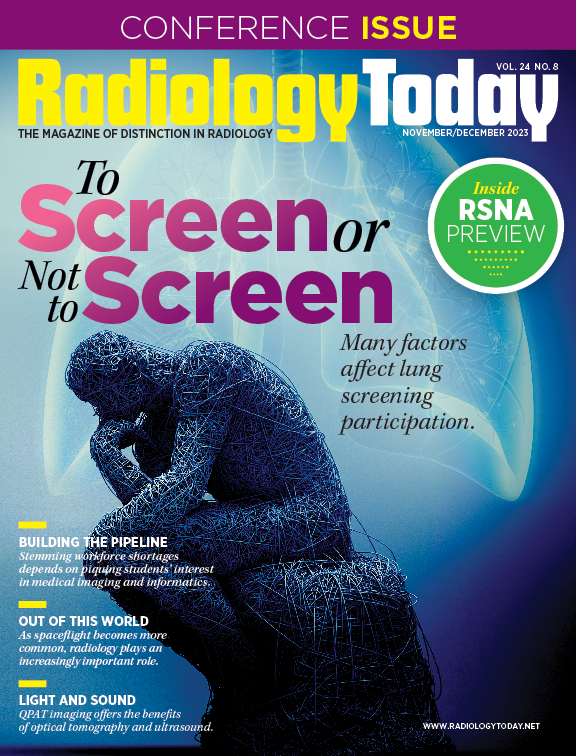 Editor’s Note: Something to Look Forward To
Editor’s Note: Something to Look Forward To
By David Yeager
Radiology Today
Vol. 24 No. 8 P. 3
The annual RSNA conference kicks off on November 26, and I can already smell the deep-dish pizza at Pizano’s. Of course, there are many other things to be excited about, such as the plenary sessions, the AI Showcase, and the many educational sessions that run the gamut of medical imaging. For your convenience, we’ve included some highlights, beginning on page 26.
This issue’s cover story examines the importance of lung screening. Although studies have found that screening with low-dose CT catches more lung cancers in early stages and improves long-term survival—including a large-scale, 20-year, international study from the Icahn School of Medicine at Mount Sinai in New York that was published in Radiology on November 7—a recent meta-analysis from the University of Oslo in Norway found that most cancer screening programs, including lung screening programs, do not prolong lives. To learn more, Keith Loria interviewed several experts about the benefits, drawbacks, and challenges of lung screening programs.
We also have a feature from assistant editor Josh Hildebrand about the challenges associated with developing radiology’s workforce. There is a shortage of radiologists, and as the workforce ages, the shortage may become more acute. However, workforce issues afflict the entire imaging enterprise. In addition to radiologists, hospitals and imaging centers need technologists and informaticists to keep up with medical imaging’s growing demand. The key is to start developing tomorrow’s medical imaging professionals today. Although that task has become more difficult in recent years, there are many ways to address it.
For something really far out, check out Beth W. Orenstein’s story about medical imaging in space. As humans strive to move deeper into space and in greater numbers, keeping them healthy will require more do-it-yourself solutions. Because the lag time of a round-trip message from a spacecraft near Mars to mission control is approximately 45 minutes, it would be significantly helpful if someone on board could read an ultrasound or X-ray. Academic programs, such as the one run by the Baylor College of Medicine and Massachusetts General Hospital that Orenstein writes about, have been created to solve some of the most vexing problems associated with health care in space.
Another far out development, although terrestrial-based, is the combination of optical tomography and ultrasound. Known as quantitative photoacoustic tomography, or QPAT, the modality combines anatomic structure with functional data, and researchers believe it may one day prove to be a useful tool for cancer imaging, as well as monitoring brain and blood activity. Rebecca Montz has all the details on page 22.
Finally, if you happen to be at RSNA, please stop by booth #3152 in the South Hall. We always enjoy meeting our readers.
Enjoy the issue, and Happy Thanksgiving from everyone at Radiology Today.
— Dave Yeager
david.yeager@gvpub.com

